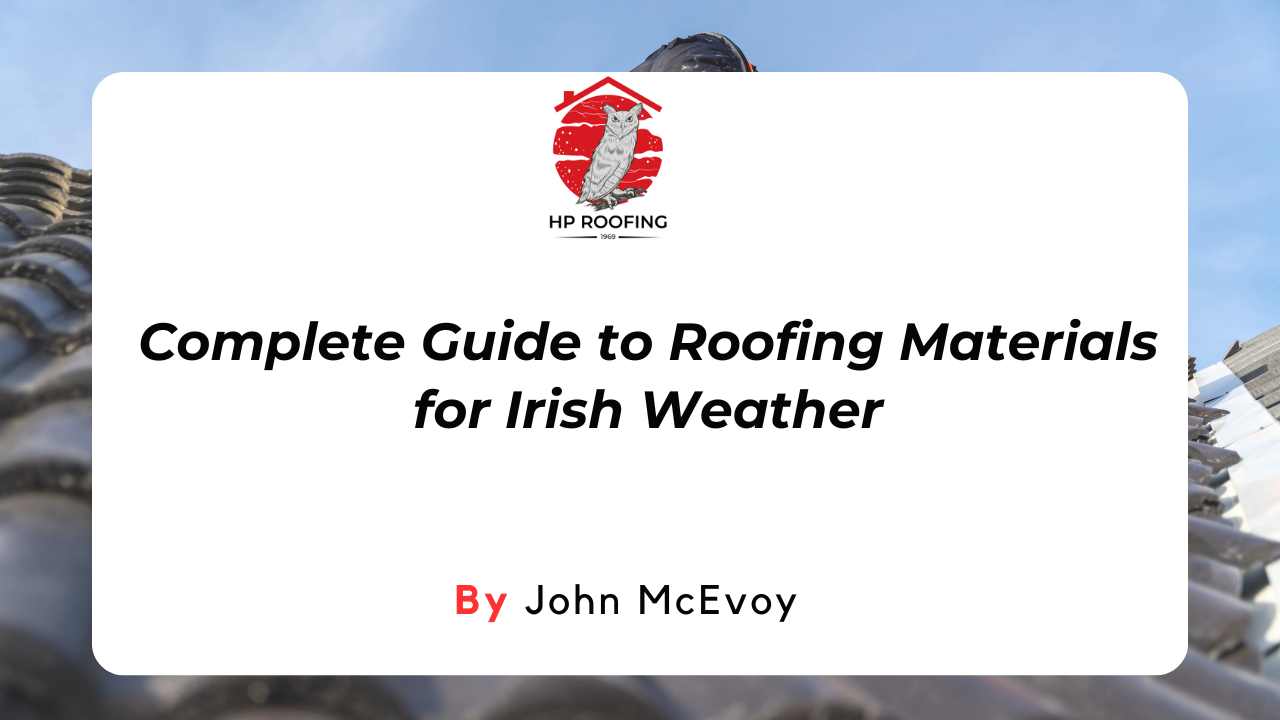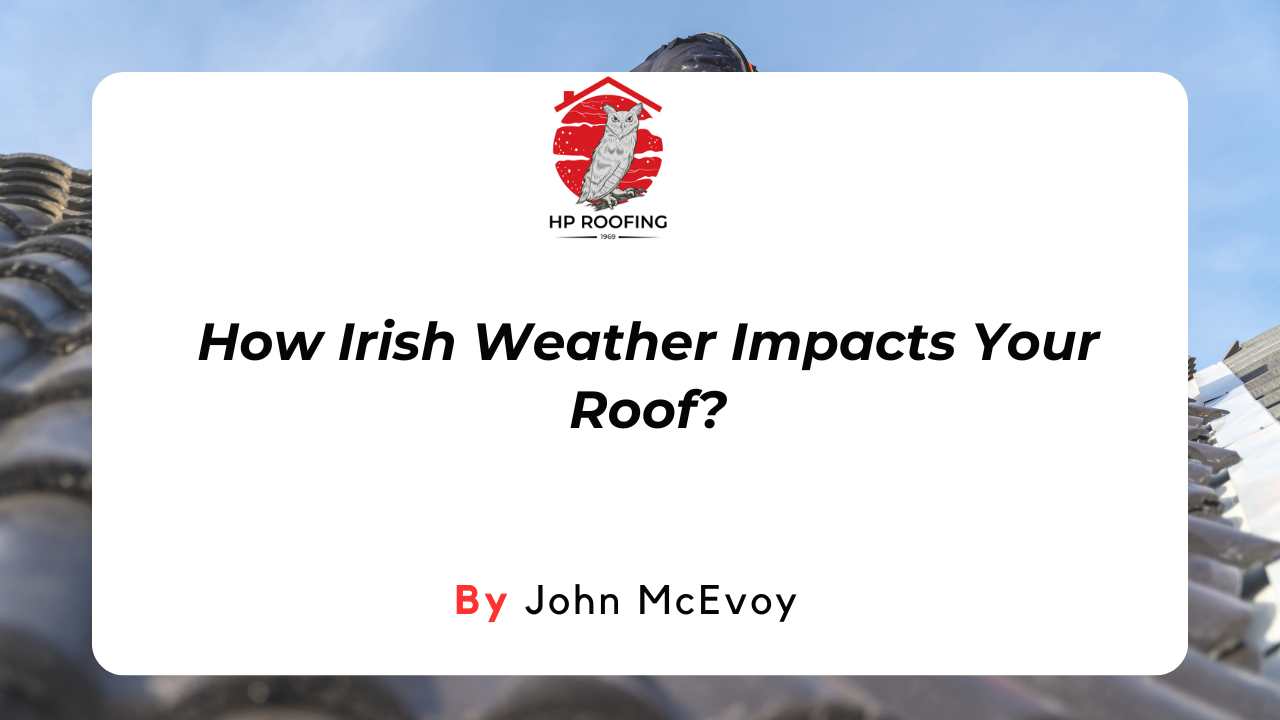Have you ever wondered how to make your roof stand strong against hail and storm damage? The size of hailstones is important when it comes to figure out how much damage they can do to your roof. However, knowing the right materials and methods to protect against them can help you avoid a lot of problems and save money.
This blog will offer expert advice on choosing durable material types, considering impact-resistant options, and practising regular maintenance habits to protect your roof from damaging weather conditions.
So, prepare yourself for some practical knowledge that could make all the difference next time a hailstorm hits!
Key Takeaways
- Choose hail-resistant roofing materials such as metal or impact-resistant shingles to increase your roof's resistance to hail and storm damage.
- Regularly inspect and maintain your roof by scheduling professional inspections, checking for loose or damaged shingles, keeping gutters clean, trimming overhanging tree branches, and clearing away debris.
- Consider consulting with your homeowner's insurance regarding coverage options for repairing or replacing your roof in the event of hail and storm damage. Discussing hail-resistant materials with them may result in discounts on premiums.
Importance of Protecting Your Roof from Hail and Storm Damage
Hail and storm damage can be devastating to our roofs, affecting both their aesthetic appeal and structural integrity. The power of a hailstorm should never be underestimated. A single storm can compromise the durability of our roof, leading to premature ageing or even immediate failure in severe cases.
Protecting your roof from such damage isn't just about preserving its appearance; it's about safeguarding your entire home. Hail-resistant roofing is like an armour shield for houses; it prevents interior water leaks, mould growth, insulation issues and more serious complications that could result from damaged roofing.
For those living in areas prone to hail storms and extreme weather conditions, investing in impact-resistant shingles or other resilient materials like rubber or metal can make all the difference.
Without adequate protection measures, we expose ourselves to potentially extensive repairs or replacements which are not only time consuming but may also lead to financial burdens.
By taking proactive steps towards protecting our roofs from hail damage now, we get peace of mind knowing that during next spring storm season our home will remain secure and undamaged.
Furthermore, insurance companies often offer discounts on premiums for homeowners who take this important step towards mitigating risk which is another great incentive for us Irish homeowners who always appreciate a good bargain! So let’s make sure we do what's best today for a safer tomorrow by giving due importance to protecting our roofs against horrible havoc caused by hail storms.
Hail Damage and its Effects on Different Roof Types
Hail can cause significant damage to different types of roofs, including asphalt shingles, metal roof panels and shingles, slate roof tile, and rubber and synthetic tile.
Asphalt shingles
Asphalt shingles are a common roofing material used by many homeowners due to their affordability and versatility. However, when it comes to hail and storm resistance, asphalt shingles may not be as durable as other materials.
Hail can cause significant damage to asphalt shingles, leading to cracks, dents, or even punctures. This can compromise the integrity of your roof and increase the risk of leaks or water damage.
While there are impact-resistant asphalt shingle products available in the market that offer greater resistance against hail damage, it is important for homeowners to carefully consider their options and weigh the cost and benefits before making a decision.
Protecting your roof from hail and storm damage requires choosing durable materials that can withstand extreme weather conditions effectively.
Investing in higher-rated materials like metal or rubber may provide better protection against hail storms compared to traditional asphalt shingles. These materials are classified as 4-rated materials, which significantly reduces the effects of hail on roofs.
Metal roofing is particularly popular for its durability and longevity, making it one of the best choices for hail resistance. It is crucial for homeowners in Ireland to assess their specific needs and consult with reputable roofing contractors who can guide them through selecting suitable roofing materials based on factors such as budget, location, climate conditions, and desired longevity.
Metal roof panels and shingles
Metal roof panels and shingles are highly recommended for homeowners looking to make their roofs more resistant to hail and storm damage. Metal roofing is known for its durability and longevity, making it one of the best options when it comes to withstand severe weather conditions.
Whether it's the impact from hailstones or strong winds, metal roofs can provide excellent protection against these elements. Additionally, metal roof panels and shingles have a high resistance rating against hail damage, ensuring that your home remains protected even during intense storms.
Consider investing in this type of roofing material if you want peace of mind knowing that your roof can withstand whatever nature throws its way.
Slate roof tile
Slate roof tile is another option for homeowners looking to make their roofs more resistant to hail and storm damage. Slate is a natural stone that offers excellent durability and can withstand harsh weather conditions, including hailstorms.
It is known for its longevity, as slate roofs can last up to 100 years with proper maintenance. The dense nature of slate makes it highly resistant to impact from hailstones, reducing the risk of damage to the roof.
Additionally, slate tiles have a low water absorption rate, which helps prevent water pooling and leakage during heavy rains. Irish homeowners considering slate roof tile should consult with roofing contractors who specialise in installing and maintaining this type of material for optimum performance against hail and storm damage.
Rubber and synthetic tile
Rubber and synthetic tiles are another option for homeowners looking to make their roofs more resistant to hail and storm damage. These roofing materials are classified as a 4-rated material, which means they significantly reduce the effects of hail on roofs.
Rubber and synthetic tiles offer durability and can withstand the impact of hailstones, helping protect your roof from damage. By choosing these materials, you can increase the longevity of your roof and minimise the need for repairs or replacements after a hailstorm.
Tips for Making Your Roof More Resistant to Hail and Storm Damage
To make your roof more resistant to hail and storm damage, consider using hail-resistant roof materials, regularly inspecting and maintaining your roof, considering impact-resistant shingles, and consulting with your homeowner's insurance.
Use hail-resistant roof materials
Using hail-resistant roof materials is a crucial step in protecting your roof from hail and storm damage. Metal roofing, for example, is known for its durability and longevity, making it an excellent option to withstand the impact of hailstones.
Impact-resistant shingles are another great choice as they are designed specifically to resist damage from hail and flying debris. These specialised materials can significantly reduce the effects of hail on your roof and help prevent costly repairs or replacements.
Considering these options when choosing roofing materials will increase your roof's resistance to hail and storm damage, providing you with peace of mind during severe weather conditions.
Regularly inspect and maintain your roof
Inspect and maintain your roof regularly to prevent hail and storm damage. Here are some important steps to keep in mind:
- Schedule professional roof inspections at least once a year. Qualified roofing contractors can identify any existing or potential issues with your roof that may make it more vulnerable to hail and storm damage.
- Check for loose or damaged shingles, flashing, and gutter systems. These areas are prone to leaks and can be further damaged by hail and strong winds.
- Keep your gutters clean and free of debris that can clog the drainage system. This will help ensure proper water flow during heavy rains and reduce the risk of water pooling on your roof.
- Trim overhanging tree branches near your roof to prevent them from causing damage during storms. Falling branches or limbs can puncture or dislodge roofing materials, leading to costly repairs.
- Clear away any debris, such as leaves or twigs, from your roof regularly. Accumulated debris can trap moisture, leading to rotting or deterioration of roofing materials over time.
- Look for signs of water damage inside your home, such as water stains on ceilings or walls, which could indicate a leaky roof. Address any leaks promptly to prevent further damage to your roof's structure.
Consider impact-resistant shingles
Impact-resistant shingles are a great option to consider when making your roof more resistant to hail and storm damage. These specially designed shingles are made to withstand the impact of hailstones and flying debris that can easily damage ordinary shingles.
With their reinforced structure, impact-resistant shingles provide an extra layer of protection for your roof during severe weather conditions. They are especially beneficial in areas prone to hailstorms, as they can resist damage from extreme temperature changes caused by hail.
By investing in impact-resistant shingles, you can help safeguard your home against the potential costly effects of hail and storm damage.
Consult with your homeowner's insurance
We strongly recommend consulting with your homeowner's insurance regarding hail and storm damage. Your insurance provider can provide valuable information on coverage options for repairing or replacing your roof in the event of damage caused by a hailstorm or severe weather conditions.
They can guide you through the claims process and help you understand what is covered under your policy. It's essential to review your policy regularly to ensure that you have adequate coverage for potential hail and storm-related damages.
By seeking guidance from your homeowner's insurance, you can make informed decisions about protecting and maintaining your roof against potential costly repairs due to hail and storm damage.
Additionally, discussing hail-resistant roofing materials or impact-resistant shingles with your insurer may also lead to possible discounts on premiums as they are designed specifically to withstand extreme weather events like heavy rain, windstorms, and hailstones.
Conclusion
In conclusion, protecting your roof from hail and storm damage is crucial for homeowners in Ireland. By using hail-resistant materials, regularly inspecting and maintaining your roof, considering impact-resistant shingles, and consulting with your homeowner's insurance, you can significantly increase the resistance of your roof to hail and storm damage.
So, don't wait; take proactive steps to safeguard your roof today!
















